31 MAY 1910 SOUTH AFRICA INDEPENDENCE
South Africa
From Wikipedia, the free encyclopedia
This article is about the modern country. For other uses, see South Africa (disambiguation).
| ||||||
| Motto: "!ke e: ǀxarra ǁke" (ǀXam) "Unity in Diversity" | ||||||
| Anthem: National anthem of South Africa | ||||||
|
Location of South Africa (dark blue)
| ||||||
|
| ||||||
| Capital |
| |||||
| Largest city | Johannesburg[2] | |||||
| Official languages | [Note 1] | |||||
| Ethnic groups(2014[3]) | ||||||
| Demonym | South African | |||||
| Government | Unitary parliamentaryrepublic | |||||
| • | President | Jacob Zuma | ||||
| • | Deputy President | Cyril Ramaphosa | ||||
| Legislature | Parliament | |||||
| • | Upper house | National Council | ||||
| • | Lower house | National Assembly | ||||
| Independence from the United Kingdom | ||||||
| • | Union | 31 May 1910 | ||||
| • | Self-governance | 11 December 1931 | ||||
| • | Republic | 31 May 1961 | ||||
| • | Current constitution | 4 February 1997 | ||||
| Area | ||||||
| • | Total | 1,221,037 km2 (25th) 471,443 sq mi | ||||
| • | Water (%) | negligible | ||||
| Population | ||||||
| • | 2015 estimate | 54,956,900[4] (25th) | ||||
| • | 2011 census | 51,770,560[5]:18 | ||||
| • | Density | 42.4/km2 (169th) 109.8/sq mi | ||||
| GDP (PPP) | 2016 estimate | |||||
| • | Total | $742.461 billion[6] (30th) | ||||
| • | Per capita | $13,321[6] (90th) | ||||
| GDP (nominal) | 2016 estimate | |||||
| • | Total | $326.541 billion[6] (35th) | ||||
| • | Per capita | $5,859[6] (88th) | ||||
| Gini (2009) | 63.1[7] very high | |||||
| HDI (2014) | medium · 116th | |||||
| Currency | South African rand(ZAR) | |||||
| Time zone | SAST (UTC+2) | |||||
| Drives on the | left | |||||
| Calling code | +27 | |||||
| ISO 3166 code | ZA | |||||
| Internet TLD | .za | |||||
South Africa, officially the Republic of South Africa, is the southernmost sovereign state in Africa. It is bounded on the south by 2,798 kilometers of coastline of Southern Africa stretching along the South Atlantic and Indian Oceans,[9][10][11] on the north by the neighbouring countries of Namibia, Botswana and Zimbabwe, and on the east by Mozambique and Swaziland, and surrounding the kingdom of Lesotho.[12] South Africa is the 25th-largest country in the world by land area, and with close to 53 million people, is the world's 24th-most populous nation. It is the southernmost country on the mainland of the Old World or the Eastern Hemisphere.[13]
South Africa is a multiethnic society encompassing a wide variety of cultures, languages, and religions. Its pluralistic makeup is reflected in the constitution's recognition of 11 official languages, which is among the highest number of any country in the world.[11] Two of these languages are of European origin: Afrikaans developed from Dutch and serves as the first language of most white and coloured South Africans; English reflects the legacy of British colonialism, and is commonly used in public and commercial life, though it is fourth-ranked as a spoken first language.[11]
The country is one of the few in Africa never to have had a coup d'état, and regular elections have been held for almost a century. However, the vast majority of black South Africans were not enfranchised until 1994. During the 20th century, the black majority sought to recover its rights from the dominant white minority, with this struggle playing a large role in the country's recent history and politics. The National Party imposed apartheid in 1948, institutionalizing previous racial segregation. After a long and sometimes violent struggle by the African National Congress and other anti-apartheid activists both inside and outside the country, discriminatory laws began to be repealed or abolished from 1990 onwards.
About 80 percent of South Africans are of Sub-Saharan African ancestry,[5] divided among a variety of ethnic groups speaking different Bantu languages, nine of which have official status.[11] The remaining population consists of Africa's largest communities of European (white), Asian (Indian), and multiracial (coloured) ancestry. Since 1994, all ethnic and linguistic groups have had political representation in the country's democracy, which comprises a parliamentary republic and nine provinces. South Africa is often referred to as the "Rainbow Nation" to describe the country's newly developing multicultural diversity in the wake of segregationist apartheid ideology.[14]
Until late 2015, the World Bank classified South Africa as an upper-middle-income economy. South Africa today is a developed country and a newly industrialized country.[15][16] Its economy is the second-largest in Africa, and the 34th-largest in the world.[6] In terms of purchasing power parity, South Africa has the seventh-highest per capita income in Africa. However, poverty and inequality remain widespread, with about a quarter of the population unemployed and living on less than US$1.25 a day.[17][18] Nevertheless, South Africa has been identified as a middle power in international affairs, and maintains significant regional influence.[19][20]
Contents
[hide]Name
See also: Official names of South Africa
The name "South Africa" is derived from the country's geographic location at the southern tip of Africa. Upon formation the country was named the Union of South Africa in English, reflecting its origin from the unification of four formerly separate British colonies. Since 1961 the long form name in English has been the "Republic of South Africa". In Dutch the country was named Republiek van Zuid-Afrika, replaced in 1983 by the Afrikaans Republiek van Suid-Afrika. Since 1994 the Republic has had an official name in each of its 11 official languages.
Mzansi, derived from the Xhosa noun umzantsi meaning "south", is a colloquial name for South Africa.[21][22]
History
Main article: History of South Africa
Prehistoric finds
South Africa contains some of the oldest archaeological and human fossil sites in the world.[23][24][25] Extensive fossil remains have been recovered from a series of caves in Gauteng Province. The area is a UNESCO World Heritage site and has been termed the Cradle of Humankind. The sites include Sterkfontein, which is one of the richest hominin fossil sites in the world. Other sites include Swartkrans, Gondolin Cave Kromdraai, Coopers Caveand Malapa. The first hominin fossil discovered in Africa, the Taung Child was found near Taung in 1924. Further hominin remains have been recovered from the sites of Makapansgat in Limpopo, Cornelia and Florisbad in theFree State, Border Cave in KwaZulu-Natal, Klasies River Mouth in eastern Cape and Pinnacle Point, Elandsfontein and Die Kelders Cave in Western Cape. These sites suggest that various hominid species existed in South Africa from about three million years ago starting with Australopithecus africanus.[26] These were succeeded by various species, including Australopithecus sediba, Homo ergaster, Homo erectus, Homo rhodesiensis, Homo helmei, Homo naledi and modern humans, Homo sapiens. Modern humans have inhabited Southern Africa for at least 170,000 years.
Within the Vaal River valley, pebble tools have been located.[27]
Bantu expansion
Settlements of Bantu-speaking peoples, who were iron-using agriculturists and herdsmen, were already present south of the Limpopo River (now the northern border with Botswana and Zimbabwe) by the 4th or 5th century CE. (SeeBantu expansion.) They displaced, conquered and absorbed the original Khoisan speakers, the Khoikhoi and San peoples. The Bantu slowly moved south. The earliest ironworks in modern-day KwaZulu-Natal Province are believed to date from around 1050. The southernmost group was the Xhosa people, whose language incorporates certain linguistic traits from the earlier Khoisan people. The Xhosa reached the Great Fish River, in today's Eastern Cape Province. As they migrated, these larger Iron Age populations displaced or assimilated earlier peoples. In Mpumalanga, several stone circles have been found along with the stone arrangement that has been named Adam's Calendar.
Portuguese contacts
At the time of European contact, the dominant ethnic group were Bantu-speaking peoples who had migrated from other parts of Africa about one thousand years before. The two major historic groups were the Xhosa and Zulu peoples.
In 1487, the Portuguese explorer Bartolomeu Dias led the first European voyage to land in southern Africa.[28] On 4 December, he landed at Walfisch Bay (now known as Walvis Bay in present-day Namibia). This was south of the furthest point reached in 1485 by his predecessor, the Portuguese navigator Diogo Cão (Cape Cross, north of the bay). Dias continued down the western coast of southern Africa. After 8 January 1488, prevented by storms from proceeding along the coast, he sailed out of sight of land and passed the southernmost point of Africa without seeing it. He reached as far up the eastern coast of Africa as, what he called, Rio do Infante, probably the present-day Groot River, in May 1488, but on his return he saw the Cape, which he first namedCabo das Tormentas (Cape of Storms). His King, John II, renamed the point Cabo da Boa Esperança, or Cape of Good Hope, as it led to the riches of the East Indies.[29] Dias' feat of navigation was later immortalised in Luís de Camões' Portuguese epic poem, The Lusiads (1572).
European colonisation
See also: History of Cape Colony
| This section needs additional citations for verification. (September 2014)(Learn how and when to remove this template message) |
By the early 17th century, Portugal's maritime power was starting to decline, and English and Dutch merchants competed to oust Lisbon from its lucrative monopoly on the spice trade.[30] Representatives of the British East India Company did call sporadically at the Cape in search of provisions as early as 1601, but later came to favour Ascension Island and St. Helena as alternative ports of refuge.[31] Dutch interest was aroused after 1647, when two employees of the Dutch East India Company were shipwrecked there for several months. The sailors were able to survive by obtaining fresh water and meat from the natives.[citation needed] They also sowed vegetables in the fertile soil.[32] Upon their return to Holland they reported favourably on the Cape's potential as a "warehouse and garden" for provisions to stock passing ships for long voyages.[31]
In 1652, a century and a half after the discovery of the Cape sea route, Jan van Riebeeck established a refreshment station at the Cape of Good Hope, at what would become Cape Town,[33] on behalf of the Dutch East India Company. The Dutch transported slaves from Indonesia, Madagascar, and India as labour for the colonists in Cape Town. As they expanded east, the Dutch settlers met the southwesterly migrating Xhosa people in the region of the Fish River. A series of wars, called the Cape Frontier Wars, were fought over conflicting land and livestock interests.
Great Britain took over the Cape of Good Hope area in 1795, to prevent it from falling under control of the French First Republic, which had invaded the Dutch Republic. Given its standing interests in Australia and India, Great Britain wanted to use Cape Town as an interim port for its merchants' long voyages. The British returned Cape Town to the Dutch Batavian Republic in 1803, the Dutch East India Company having effectively gone bankrupt by 1795.
The British annexed the Cape Colony in 1806, and continued the frontier wars against the Xhosa; the British pushed the eastern frontier through a line of forts established along the Fish River and they consolidated the territory by encouraging British settlement. During the 1820s both the Boers (original Dutch, Flemish, German, and French settlers) and the British 1820 Settlers claimed land in the north and east of the country. Conflicts arose among the Xhosa, Zulu, Sotho and Boer groups who competed to expand their territories.
In the first two decades of the 19th century, the Zulu people grew in power and expanded their territory under their leader, Shaka.[34] Shaka's warfare led indirectly to the Mfecane ("crushing") that devastated and depopulated the inland plateau in the early 1820s.[35][36] An offshoot of the Zulu, the Matabele people created a larger empire that included large parts of the highveld under their king Mzilikazi.
During the early 1800s, many Dutch settlers departed from the Cape Colony, where they had been subjected to British control. They migrated to the future Natal, Orange Free State, and Transvaal regions. The Boers founded theBoer Republics: the South African Republic (now Gauteng, Limpopo, Mpumalanga and North West provinces) and the Orange Free State (Free State).
The discovery of diamonds in 1867 and gold in 1884 in the interior started the Mineral Revolution and increased economic growth and immigration. This intensified the European-South African efforts to gain control over the indigenous peoples. The struggle to control these important economic resources was a factor in relations between Europeans and the indigenous population and also between the Boers and the British.[37]
The Anglo-Zulu War was fought in 1879 between the British Empire and the Zulu Kingdom. Following Lord Carnarvon's successful introduction of federation in Canada, it was thought that similar political effort, coupled with military campaigns, might succeed with the African kingdoms, tribal areas and Boer republics in South Africa. In 1874, Sir Henry Bartle Frere was sent to South Africa as High Commissioner for the British Empire to bring such plans into being. Among the obstacles were the presence of the independent states of the South African Republic and the Kingdom of Zululand and its army. The Zulu nation spectacularly defeated the British at the Battle of Isandlwana. Eventually though the war was lost resulting in the end of the Zulu nation's independence.
The Boer Republics successfully resisted British encroachments during the First Boer War (1880–1881) using guerrilla warfare tactics, which were well suited to local conditions. The British returned with greater numbers, more experience, and new strategy in the Second Boer War (1899–1902) but suffered heavy casualties through attrition; nonetheless, they were ultimately successful.
Within the country, anti-British policies among white South Africans focused on independence. During the Dutch and British colonial years, racial segregation was mostly informal, though some legislation was enacted to control the settlement and movement of native people, including the Native Location Act of 1879 and the system of pass laws.[38][39][40][41][42] Power was held by the ethnic European colonists.
Eight years after the end of the Second Boer War and after four years of negotiation, an act of the British Parliament (South Africa Act 1909) granted nominal independence, while creating the Union of South Africa on 31 May 1910. The Union was a dominion that included the former territories of the Cape and Natal colonies, as well as the republics of Orange Free State and Transvaal.[43]
The Natives' Land Act of 1913 severely restricted the ownership of land by blacks; at that stage natives controlled only 7% of the country. The amount of land reserved for indigenous peoples was later marginally increased.[44]
In 1931 the union was fully sovereign from the United Kingdom with the passage of the Statute of Westminster, which abolished the last powers of the British Government on the country. In 1934, the South African Party andNational Party merged to form the United Party, seeking reconciliation between Afrikaners and English-speaking "Whites". In 1939 the party split over the entry of the Union into World War II as an ally of the United Kingdom, a move which the National Party followers strongly opposed.
In 1948, the National Party was elected to power. It strengthened the racial segregation begun under Dutch and British colonial rule. The Nationalist Government classified all peoples into three races and developed rights and limitations for each. The white minority (less than 20%[45]) controlled the vastly larger black majority. The legally institutionalised segregation became known as apartheid. While whites enjoyed the highest standard of living in all of Africa, comparable to First World Western nations, the black majority remained disadvantaged by almost every standard, including income, education, housing, and life expectancy. The Freedom Charter, adopted in 1955 by the Congress Alliance, demanded a non-racial society and an end to discrimination.
Republic
On 31 May 1961, the country became a republic following a referendum in which white voters narrowly voted in favour thereof (the British-dominated Natal province rallied against the issue).[46] Queen Elizabeth II was stripped of the title Queen of South Africa, and the last Governor-General, namely Charles Robberts Swart, became State President. As a concession to the Westminster system, the presidency remained parliamentary appointed and virtually powerless until P. W. Botha's Constitution Act of 1983, which (intact in these regards) eliminated the office of Prime Minister and instated a near-unique "strong presidency" responsible to parliament. Pressured by otherCommonwealth of Nations countries, South Africa left the organisation in 1961 and was readmitted only in 1994.
Despite opposition both within and outside the country, the government legislated for a continuation of apartheid. The security forces harshly oppressed resistance movements, and violence became widespread, with anti-apartheid activists using strikes, marches, protests, and sabotage by bombing and other means. The African National Congress (ANC) was a major resistance movement. Apartheid became increasingly controversial, and some Western nations and institutions began to boycott business with South Africa because of its racial policies and suppression of civil rights. International sanctions, divestment of holdings by investors accompanied growing unrest and oppression within South Africa.
In the late 1970s, South Africa initiated a programme of nuclear weapons development. In the following decade, it produced six deliverable nuclear weapons.[47][48]
The Mahlabatini Declaration of Faith, signed by Mangosuthu Buthelezi and Harry Schwarz in 1974, enshrined the principles of peaceful transition of power and equality for all, the first of such agreements by black and white political leaders in South Africa. Ultimately, F. W. de Klerk opened bilateral discussions with Nelson Mandela in 1993 for a transition of policies and government.
In 1990 the National Party government took the first step towards dismantling discrimination when it lifted the ban on the African National Congress and other political organisations. It released Nelson Mandela from prison after twenty-seven years' serving a sentence for sabotage. A negotiation process followed. With approval from an predominantly white referendum, the government repealed apartheid legislation. South Africa also destroyed its nuclear arsenal and acceded to the Nuclear Non-Proliferation Treaty. South Africa held its first universal elections in 1994, which the ANC won by an overwhelming majority. It has been in power ever since. The country rejoined theCommonwealth of Nations and became a member of the Southern African Development Community (SADC).
In post-apartheid South Africa, unemployment has been extremely high as the country has struggled with many changes. While many blacks have risen to middle or upper classes, the overall unemployment rate of blacks worsened between 1994 and 2003.[49] Poverty among whites, previously rare, increased.[50] In addition, the current government has struggled to achieve the monetary and fiscal discipline to ensure both redistribution of wealth and economic growth. Since the ANC-led government took power, the United Nations Human Development Index of South Africa has fallen, while it was steadily rising until the mid-1990s.[51] Some may be attributed to the HIV/AIDS pandemic, and the failure of the government to take steps to address it in the early years.[52]
In May 2008, riots left over sixty people dead.[53] The Centre on Housing Rights and Evictions estimates over 100,000 people were driven from their homes.[54] The targets were mainly migrants and refugees seeking asylum, but a third of the victims were South African citizens.[53] In a 2006 survey, the South African Migration Project concluded that South Africans are more opposed to immigration than anywhere else in the world.[55] The United Nations High Commissioner for Refugees in 2008 reported over 200,000 refugees applied for asylum in South Africa, almost four times as many as the year before.[56] These people were mainly from Zimbabwe, though many also come fromBurundi, Democratic Republic of the Congo, Rwanda, Eritrea, Ethiopia and Somalia.[56] Competition over jobs, business opportunities, public services and housing has led to tension between refugees and host communities.[56] Whilexenophobia is still a problem, recent violence has not been as widespread as initially feared.[56]
Geography
Main article: Geography of South Africa
South Africa is located at the southernmost region of Africa, with a long coastline that stretches more than 2,500 km (1,553 mi) and along two oceans (the South Atlantic and the Indian). At 1,219,912 km2 (471,011 sq mi),[57] South Africa is the 25th-largest country in the world and is comparable in size to Colombia. Mafadi in the Drakensbergat 3,450 m (11,320 ft) is the highest peak in South Africa. Excluding the Prince Edward Islands, the country lies between latitudes 22° and 35°S, and longitudes 16°and 33°E.
The interior of South Africa consists of a vast, in most places, almost flat, plateau with an altitude of between 1,000 m (3,300 ft) and 2,100 m (6,900 ft), highest in the east, sloping gently downwards towards the west and north, and slightly less so to the south and south-west.[58] This plateau is surrounded by the Great Escarpment[59] whose eastern, and highest stretch is known as the Drakensberg.[60]
The south and south-western parts of the plateau (at approximately 1100–1800 m above sea level), and the adjoining plain below (at approximately 700–800 m above sea level – see map on the right) is known as the Great Karoo, which consists of sparsely populated scrubland. To the north the Great Karoo fades into the even drier and more arid Bushmanland, which eventually becomes the Kalahari desert in the very north-west of the country. The mid-eastern, and highest part of the plateau is known as the Highveld. This relatively well-watered area is home to a great proportion of the country’s commercial farmlands, and contains its largest conurbation (Gauteng Province). To the north of Highveld, from about the 25° 30' S line of latitude, the plateau slopes downwards into the Bushveld, which ultimately gives way to the Limpopo lowlands or Lowveld.[59]
The coastal belt, below the Great Escarpment, moving clockwise from the northeast, consists of the Limpopo Lowveld, which merges into theMpumalanga Lowveld, below the Mpumalanga Drakensberg (the eastern portion of the Great Escarpment).[61] This is hotter, drier and less intensely cultivated than the Highveld above the escarpment.[59] The Kruger National Park, located in the provinces of Limpopo andMpumalanga in northeastern South Africa, occupies a large portion of the Lowveld covering 19,633 square kilometres (7,580 sq mi.) [62] South of the Lowveld the annual rainfall increases as one enters KwaZulu-Natal Province, which, especially near the coast, is subtropically hot and humid. The KwaZulu-Natal – Lesotho international border is formed by the highest portion of the Great Escarpment, or Drakensberg, which reaches an altitude of over 3,000 m (9,800 ft).[63] The climate at the foot of this part of the Drakensberg is temperate.
The coastal belt below the south and south-western stretches of the Great Escarpment contains several ranges of Cape Fold Mountainswhich run parallel to the coast, separating the Great Escarpment from the ocean.[64][65] (These parallel ranges of fold mountains are shown on the map, above left. Note the course of the Great Escarpment to the north of these mountain ranges.) The land (at approximately 400–500 m above sea level) between two of these ranges of fold mountains in the south (i.e. between the Outeniqua and Langeberg ranges to the south and the Swartberg range to the north) is known as the Little Karoo,[59] which consists of semi-desert scrubland similar to that of the Great Karoo, except that its northern strip along the foothills of the Swartberg Mountains, has a somewhat higher rainfall and is therefore more cultivated than the Great Karoo. The Little Karoo is historically, and still, famous for its ostrich farming around the town of Oudtshoorn. The lowland area (700–800 m above sea level) to the north of the Swartberg mountain range up to the Great Escarpment is the lowland part of the Great Karoo (see map at top right), which is climatically and botanically almost indistinguishable from the Karoo above the Great Escarpment. The narrow coastal strip between the most seaward Cape Fold Mountain range (i.e. the Langeberg-Outeniqua mountains) and the ocean has a moderately high year-round rainfall, especially in the George-Knysna-Plettenberg Bay region, which is known as the Garden Route. It is famous for the most extensive areas of indigenous forests in South Africa (a generally forest-poor country).
In the south-west corner of the country the Cape Peninsula forms the southernmost tip of the coastal strip which borders the Atlantic Ocean, and ultimately terminates at the country’s border with Namibia at the Orange River. TheCape Peninsula has a Mediterranean climate, making it and its immediate surrounds the only portion of Africa south of the Sahara which receives most of its rainfall in winter.[66][67]
The greater Cape Town metropolitan area is situated on the Cape Peninsula and is home to 3.7 million people according to the 2011 population census. It is the country’s legislative capital.
The coastal belt to the north of the Cape Peninsula is bounded on the west by the Atlantic Ocean and the first row of north-south running Cape Fold Mountains to the east. The Cape Fold Mountains peter out at about the 32° S line of latitude,[65] after which the coastal plain is bounded by the Great Escarpment itself. The most southerly portion of this coastal belt is known as the Swartland and Malmesbury Plain, which is an important wheat growing region, relying on winter rains. The region further north is known as Namaqualand,[68] which becomes more and more arid as one approaches the Orange River. The little rain that falls, tends to fall in winter,[67] which results in one of the world’s most spectacular displays of flowers carpeting huge stretches of veld in spring (August – September).
South Africa also has one possession, the small sub-Antarctic archipelago of the Prince Edward Islands, consisting of Marion Island (290 km2 or 110 sq mi) and Prince Edward Island (45 km2 or 17 sq mi) (not to be confused with the Canadian province of the same name).
Climate
Main article: Climate of South Africa
South Africa has a generally temperate climate, due in part to being surrounded by the Atlantic and Indian Oceans on three sides, by its location in the climatically milder Southern Hemisphere and due to the average elevation rising steadily towards the north (towards the equator) and further inland. Due to this varied topography and oceanic influence, a great variety of climatic zones exist. The climatic zones range from the extreme desert of the southernNamib in the farthest northwest to the lush subtropical climate in the east along the Mozambique border and the Indian Ocean. Winters in South Africa occur between June and August.
The extreme southwest has a climate remarkably similar to that of the Mediterranean with wet winters and hot, dry summers, hosting the famous fynbos biome of shrubland and thicket. This area also produces much of the wine in South Africa. This region is also particularly known for its wind, which blows intermittently almost all year. The severity of this wind made passing around the Cape of Good Hope particularly treacherous for sailors, causing many shipwrecks. Further east on the south coast, rainfall is distributed more evenly throughout the year, producing a green landscape. This area is popularly known as the Garden Route.
The Free State is particularly flat because it lies centrally on the high plateau. North of the Vaal River, the Highveld becomes better watered and does not experience subtropical extremes of heat. Johannesburg, in the centre of the Highveld, is at 1,740 m (5,709 ft) and receives an annual rainfall of 760 mm (29.9 in). Winters in this region are cold, although snow is rare.
The high Drakensberg mountains, which form the south-eastern escarpment of the Highveld, offer limited skiing opportunities in winter. The coldest place on mainland South Africa is Sutherland in the western Roggeveld Mountains, where midwinter temperatures can reach as low as −15 °C (5 °F). The Prince Edward Islands have colder average annual temperatures, but Sutherland has colder extremes. The deep interior of mainland South Africa has the hottest temperatures: a temperature of 51.7 °C (125.06 °F) was recorded in 1948 in the Northern Cape Kalahari near Upington,[69] but this temperature is unofficial and was not recorded with standard equipment, the official highest temperature is 48.8 °C (119.84 °F) at Vioolsdrif in January 1993.[70]
Biodiversity
See also: Wildlife of South Africa and Protected areas of South Africa
South Africa signed the Rio Convention on Biological Diversity on 4 June 1994, and became a party to the convention on 2 November 1995.[71] It has subsequently produced a National Biodiversity Strategy and Action Plan, which was received by the convention on 7 June 2006.[72] The country is ranked sixth out of the world's seventeen megadiverse countries.[73]
Animals
Numerous mammals are found in the bushveld including Transvaal lions, African leopards, South African cheetahs, southern white rhinos, blue wildebeest, kudus, impalas, hyenas, hippopotami and South African giraffes. A significant extent of the bushveld exists in the north-east including Kruger National Park and the Sabi Sand Game Reserve, as well as in the far north in the Waterberg Biosphere. South Africa houses many endemic species, among them the critically endangered riverine rabbit (Bunolagus monticullaris) in the Karoo.
Fungi
Up to 1945, more than 4900 species of fungi (including lichen-forming species) had been recorded.[74] In 2006, the total number of fungi which occur in South Africa was conservatively estimated at about 200,000 species, but that did not take into account fungi associated with insects.[75] If correct, then the number of South African fungi dwarfs that of its plants. In at least some major South African ecosystems, an exceptionally high percentage of fungi are highly specific in terms of the plants with which they occur.[76] The country's biodiversity strategy and action plan does not mention fungi (including lichen-forming fungi).[72]
Plants
With more than 20,000 different plants, or about 10% of all the known species of plants on Earth,[citation needed] South Africa is particularly rich in plant diversity. The most prevalent biome in South Africa is the grassland, particularly on the Highveld, where the plant cover is dominated by different grasses, low shrubs, and acacia trees, mainly camel-thorn and whitethorn. Vegetation becomes even more sparse towards the northwest due to low rainfall. There are several species of water-storing succulents like aloes and euphorbias in the very hot and dry Namaqualand area. The grass and thorn savannah turns slowly into a bush savannah towards the north-east of the country, with denser growth. There are significant numbers of baobab trees in this area, near the northern end of Kruger National Park.[77]
The fynbos biome, which makes up the majority of the area and plant life in the Cape floristic region, one of the six floral kingdoms, is located in a small region of the Western Cape and contains more than 9,000 of those species, making it among the richest regions on earth in terms of plant diversity.[citation needed] Most of the plants are evergreen hard-leaf plants with fine, needle-like leaves, such as the sclerophyllous plants. Another uniquely South African flowering plant group is the genus Protea. There are around 130 different species of Protea in South Africa.
While South Africa has a great wealth of flowering plants, only 1% of South Africa is forest, almost exclusively in the humid coastal plain of KwaZulu-Natal, where there are also areas of Southern Africa mangroves in river mouths. There are even smaller reserves of forests that are out of the reach of fire, known as montane forests. Plantations of imported tree species are predominant, particularly the non-native eucalyptus and pine.
Conservation issues
South Africa has lost a large area of natural habitat in the last four decades, primarily due to overpopulation, sprawling development patterns and deforestation during the 19th century. South Africa is one of the worst affected countries in the world when it comes to invasion by alien species with many (e.g. black wattle, Port Jackson willow, Hakea, Lantana and Jacaranda) posing a significant threat to the native biodiversity and the already scarce water resources. The original temperate forest found by the first European settlers was exploited ruthlessly until only small patches remained. Currently, South African hardwood trees like real yellowwood (Podocarpus latifolius), stinkwood(Ocotea bullata), and South African black ironwood (Olea laurifolia) are under government protection. Statistics from the South African Environmental Affairs department show a record 1215 rhinos have been killed in 2014.[78]
Climate change is expected to bring considerable warming and drying to much of this already semi-arid region, with greater frequency and intensity of extreme weather events such as heatwaves, flooding and drought. According to computer generated climate modelling produced by the South African National Biodiversity Institute[79] parts of southern Africa will see an increase in temperature by about one degree Celsius along the coast to more than four degrees Celsius in the already hot hinterland such as the Northern Cape in late spring and summertime by 2050. The Cape Floral Kingdom, been identified as one of the global biodiversity hotspots, it will be hit very hard by climate change. Drought, increased intensity and frequency of fire and climbing temperatures are expected to push many rare species towards extinction.
Politics
Main articles: Government of South Africa, Politics of South Africa, Law of South Africa and Human rights in South Africa
South Africa is a parliamentary republic, although unlike most such republics the President is both head of state and head of government, and depends for his tenure on the confidence ofParliament. The executive, legislature and judiciary are all subject to the supremacy of the Constitution, and the superior courts have the power to strike down executive actions and acts of Parliament if they are unconstitutional.
The National Assembly, the lower house of Parliament, consists of 400 members and is elected every five years by a system of party-list proportional representation. The National Council of Provinces, the upper house, consists of ninety members, with each of the nine provincial legislatures electing ten members.
After each parliamentary election, the National Assembly elects one of its members as President; hence the President serves a term of office the same as that of the Assembly, normally five years. No President may serve more than two terms in office.[80] The President appoints a Deputy President and Ministers, who form the Cabinet which consists of Departments andMinistries. The President and the Cabinet may be removed by the National Assembly by a motion of no confidence.
In the most recent election, held on 7 May 2014, the African National Congress (ANC) won 62.2% of the vote and 249 seats, while the main opposition, the Democratic Alliance (DA) won 22.2% of the vote and 89 seats. The Economic Freedom Fighters, founded by Julius Malema, the former President of the ANC's Youth Wing who was later expelled from the ANC, won 6.4% of the vote and 25 seats. The ANC has been the governing political party in South Africa since the end of apartheid.
South Africa has no legally defined capital city. The fourth chapter of the Constitution of South Africa, states that "The seat of Parliament is Cape Town, but an Act of Parliament enacted in accordance with section 76(1) and (5) may determine that the seat of Parliament is elsewhere."[81] The country's three branches of government are split over different cities. Cape Town, as the seat of Parliament, is the legislative capital; Pretoria, as the seat of the President and Cabinet, is the administrative capital; and Bloemfontein, as the seat of the Supreme Court of Appeal, is the judicial capital, while the Constitutional Court of South Africa sits in Johannesburg. Most foreign embassies are located in Pretoria.
Since 2004, South Africa has had many thousands of popular protests, some violent, making it, according to one academic, the "most protest-rich country in the world".[82] There have been a number of incidents of political repression as well as threats of future repression in violation of this constitution leading some analysts and civil society organisations to conclude that there is or could be a new climate of political repression,[83][84] or a decline in political tolerance.[85]
In 2008, South Africa placed 5th out of 48 sub-Saharan African countries on the Ibrahim Index of African Governance. South Africa scored well in the categories of Rule of Law, Transparency & Corruption and Participation & Human Rights, but was let down by its relatively poor performance in Safety & Security.[86] In November 2006, South Africa became the first African country to legalise same-sex marriage.[87]
Law
See also: Crime in South Africa
The Constitution of South Africa is the supreme rule of law in the country. The primary sources of South African law are Roman-Dutch mercantile law and personal law with English Common law, as imports of Dutch settlements andBritish colonialism.[88] The first European based law in South Africa was brought by the Dutch East India Company and is called Roman-Dutch law. It was imported before the codification of European law into the Napoleonic Codeand is comparable in many ways to Scots law. This was followed in the 19th century by English law, both common and statutory. Starting in 1910 with unification, South Africa had its own parliament which passed laws specific for South Africa, building on those previously passed for the individual member colonies.
The judicial system consists of the magistrates' courts, which hear lesser criminal cases and smaller civil cases; the High Courts, which are courts of general jurisdiction for specific areas; the Supreme Court of Appeal, which is the highest court in all but constitutional matters; and the Constitutional Court, which hears only constitutional matters.
Nearly 50 murders are committed each day in South Africa.[89] In the year ended March 2014 there were 17,068 murders and the murder rate was 32.2 per 100,000 - about five times higher than the global average of 6 per 100,000.[90] Middle-class South Africans seek security in gated communities.[91] The private security industry in South Africa is the largest in the world,[92] with nearly 9,000 registered companies and 400,000 registered active private security guards, more than the South African police and army combined.[93] Many emigrants from South Africa also state that crime was a big motivator for them to leave.[94] Crime against the farming community has continued to be a major problem.[95]
It is estimated that 500,000 women are raped in South Africa every year[96] with the average woman more likely to be raped than complete secondary school.[97] A 2009 survey found one in four South African men admitted to raping someone[98] and another survey found one in three women out of 4000 surveyed women said they had been raped in the past year.[99] Rapes are also perpetrated by children (some as young as ten).[100] Child and baby rape incidences are some of the highest in the world, largely as a result of the virgin cleansing myth, and a number of high-profile cases (sometimes as young as eight months[100]) have outraged the nation.[101]
Foreign relations
Main article: Foreign relations of South Africa
As the Union of South Africa, the country was a founding member of the United Nations. The then Prime Minister Jan Smuts wrote the preamble to the United Nations Charter.[102][103] South Africa is one of the founding members of the African Union (AU), and has the second largest economy of all the members. It is also a founding member of the AU's New Partnership for Africa's Development (NEPAD).
South Africa has played a key role as a mediator in African conflicts over the last decade, such as in Burundi, the Democratic Republic of Congo, the Comoros, and Zimbabwe. After apartheid ended, South Africa was readmitted to the Commonwealth of Nations. The country is a member of the Group of 77 and chaired the organisation in 2006. South Africa is also a member of the Southern African Development Community, South Atlantic Peace and Cooperation Zone, Southern African Customs Union, Antarctic Treaty System, World Trade Organization, International Monetary Fund, G20 and G8+5.
South African President Jacob Zuma and Chinese President Hu Jintao upgraded bilateral ties between the two countries on 24 August 2010, when they signed the Beijing Agreement, which elevated South Africa's earlier "strategic partnership" with China to the higher level of "comprehensive strategic partnership" in both economic and political affairs, including the strengthening of exchanges between their respective ruling parties and legislatures.[104][105] In April 2011, South Africa formally joined the Brazil-Russia-India-China (BRICS) grouping of countries, identified by President Zuma as the country's largest trading partners, and also the largest trading partners with Africa as a whole. Zuma asserted that BRICS member countries would also work with each other through the UN, the Group of Twenty (G20) and the India, Brazil South Africa (IBSA) forum.[106]
Military
Main article: South African National Defence Force
The South African National Defence Force (SANDF) was created in 1994,[107][108] as an all volunteer force composed of the former South African Defence Force, the forces of the African nationalist groups (Umkhonto we Sizwe andAzanian People's Liberation Army), and the former Bantustan defence forces.[107] The SANDF is subdivided into four branches, the South African Army, the South African Air Force, the South African Navy, and the South African Military Health Service.[109] In recent years, the SANDF has become a major peacekeeping force in Africa,[110] and has been involved in operations in Lesotho, the Democratic Republic of the Congo,[110] and Burundi,[110] amongst others. It has also served in multi-national UN peacekeeping forces such as the United Nations Force Intervention Brigade for example.
South Africa is the only African country to have successfully developed nuclear weapons. It became the first country (followed by Ukraine) with nuclear capability to voluntarily renounce and dismantle its programme and in the process signed the Nuclear Non-Proliferation Treaty in 1991.[111] South Africa undertook a nuclear weapons programme in the 1970s[111] According to former state president FW de Klerk, the decision to build a "nuclear deterrent" was taken "as early as 1974 against a backdrop of a Soviet expansionist threat."[112] South Africa is alleged to have conducted a nuclear test over the Atlantic in 1979,[113] although this is officially denied. Former president FW de Klerk having confirmed that South Africa had "never conducted a clandestine nuclear test."[112] Six nuclear devices were completed between 1980 and 1990, but all were dismantled before South Africa signed the Nuclear Non-Proliferation Treaty in 1991.[112]
Administrative divisions
Main article: Provinces of South Africa
Each of the nine provinces is governed by a unicameral legislature, which is elected every five years by party-list proportional representation. The legislature elects a Premier as head of government, and the Premier appoints an Executive Council as a provincial cabinet. The powers of provincial governments are limited to topics listed in the Constitution; these topics include such fields as health, education, public housing and transport.
The provinces are in turn divided into 52 districts: 8 metropolitan and 44 district municipalities. The district municipalities are further subdivided into 226 local municipalities. The metropolitan municipalities, which govern the largest urban agglomerations, perform the functions of both district and local municipalities.
| Province | Provincial capital | Largest city | Area (km2)[114] | Population (2013)[4] |
|---|---|---|---|---|
| Eastern Cape | Bhisho | Port Elizabeth | 168,966 | 6,620,100 |
| Free State | Bloemfontein | Bloemfontein | 129,825 | 2,753,200 |
| Gauteng | Johannesburg | Johannesburg | 18,178 | 12,728,400 |
| KwaZulu-Natal | Pietermaritzburg | Durban | 94,361 | 10,456,900 |
| Limpopo | Polokwane | Polokwane | 125,754 | 5,518,000 |
| Mpumalanga | Nelspruit | Mbombela | 76,495 | 4,128,000 |
| North West | Mahikeng | Rustenburg | 104,882 | 3,597,600 |
| Northern Cape | Kimberley | Kimberley | 372,889 | 1,162,900 |
| Western Cape | Cape Town | Cape Town | 129,462 | 6,016,900 |
Economy
Main article: Economy of South Africa
South Africa has a mixed economy, the second largest in Africa after Nigeria. It also has a relatively high GDP per capita compared to other countries in Sub-Saharan Africa ($11,750 at PPP as of 2012). Despite this, South Africa is still burdened by a relatively high rate of poverty and unemployment, and is also ranked in the top 10 countries in the world for income inequality,[115][116][117] measured by the Gini coefficient.
Unlike most of the world's poor countries, South Africa does not have a thriving informal economy. Only 15% of South African jobs are in the informal sector, compared with around half in Brazil and India and nearly three-quarters in Indonesia. The OECD attributes this difference to South Africa's widespread welfare system.[118] World Bank research shows that South Africa has one of the widest gaps between per capita GNP versus its Human Development Indexranking, with only Botswana showing a larger gap.[119]
After 1994 government policy brought down inflation, stabilised public finances, and some foreign capital was attracted, however growth was still subpar.[120] From 2004 onward economic growth picked up significantly; both employment and capital formation increased.[120] During the presidency of Jacob Zuma, the government has begun to increase the role of state-owned enterprises. Some of the biggest state-owned companies are Eskom, the electric power monopoly,South African Airways (SAA), and Transnet, the railroad and ports monopoly. Some of these state-owned companies have not been profitable, such as SAA, which has required bailouts totaling 30 billion rand ($2.3 billion) over 20 years.[121]
South Africa is a popular tourist destination, and a substantial amount of revenue comes from tourism.[122] Illegal immigrants are involved in informal trading.[123] Many immigrants to South Africa continue to live in poor conditions, and the immigration policy has become increasingly restrictive since 1994.[124]
Principal international trading partners of South Africa—besides other African countries—include Germany, the United States, China, Japan, the United Kingdom and Spain.[125]
The South African agricultural industry contributes around 10% of formal employment, relatively low compared to other parts of Africa, as well as providing work for casual labourers and contributing around 2.6% of GDP for the nation.[126]Due to the aridity of the land, only 13.5% can be used for crop production, and only 3% is considered high potential land.[127]
In August 2013, South Africa was ranked as the top African Country of the Future by FDi magazine based on the country's economic potential, labour environment, cost-effectiveness, infrastructure, business friendliness, and Foreign direct investment Strategy.[128]
The FSI ranks South Africa as the 36th safest tax haven in the world, ahead of the Philippines but behind the Bahamas.
Labour market
During 1995–2003, the number of formal jobs decreased and informal jobs increased; overall unemployment worsened.[49]
The government's Black Economic Empowerment policies have drawn criticism from Neva Makgetla, lead economist for research and information at the Development Bank of Southern Africa, for focusing "almost exclusively on promoting individual ownership by black people (which) does little to address broader economic disparities, though the rich may become more diverse."[129] Official affirmative action policies have seen a rise in black economic wealth and an emerging black middle class.[130] Other problems include state ownership and interference, which impose high barriers to entry in many areas.[131] Restrictive labour regulations have contributed to the unemployment malaise.[49]
Along with many African nations, South Africa has been experiencing a "brain drain" in the past 20 years. This is believed to be potentially damaging for the regional economy,[132][not in citation given][clarification needed] and is almost certainly detrimental for the well-being of those reliant on the healthcare infrastructure.[133] The skills drain in South Africa tends to demonstrate racial contours given the skills distribution legacy of South Africa and has thus resulted in large white South African communities abroad.[134] However, the statistics which purport to show a brain drain are disputed and also do not account for repatriation and expiry of foreign work contracts. According to several surveys[135][136] there has been a reverse in brain drain following the global financial crisis of 2008-2009 and expiration of foreign work contracts. In the first quarter of 2011, confidence levels for graduate professionals were recorded at a level of 84% in a PPS survey.[137]
Science and technology
Main article: Science and technology in South Africa
Several important scientific and technological developments have originated in South Africa. The first human-to-human heart transplant was performed by cardiac surgeon Christiaan Barnard at Groote Schuur Hospital in December 1967, Max Theiler developed a vaccine against yellow fever, Allan McLeod Cormack pioneered x-ray computed tomography, and Aaron Klug developed crystallographic electron microscopy techniques. With the exception of that of Barnard, all of these advancements were recognised with Nobel Prizes. Sydney Brenner won most recently, in 2002, for his pioneering work in molecular biology.
Mark Shuttleworth founded an early Internet security company Thawte, that was subsequently bought out by world-leader VeriSign. Despite government efforts to encourage entrepreneurship in biotechnology, IT and other high technology fields, no other notable groundbreaking companies have been founded in South Africa. It is the expressed objective of the government to transition the economy to be more reliant on high technology, based on the realisation that South Africa cannot compete with Far Eastern economies in manufacturing, nor can the republic rely on its mineral wealth in perpetuity.
South Africa has cultivated a burgeoning astronomy community. It hosts the Southern African Large Telescope, the largest optical telescope in the Southern Hemisphere. South Africa is currently building the Karoo Array Telescopeas a pathfinder for the €1.5 billion Square Kilometer Array project.[138] On 25 May 2012 it was announced that hosting of the Square Kilometer Array Telescope will be split over both the South African and the Australia/New Zealand sites.[139]
Water supply and sanitation
Main article: Water supply and sanitation in South Africa
After the end of Apartheid South Africa's newly elected government struggled with the then growing service and backlogs with respect to access to Water supply and Sanitation developed. The government thus made a strong commitment to high service standards and to high levels of investment subsidies to achieve those standards. Since then, the country has made some progress with regard to improving access to water supply: It reached universal access to an improved water source in urban areas, and in rural areas the share of those with access increased from 66% to 79% from 1990 to 2010.[140]
South Africa also has a strong water industry with a track record in innovation. However, much less progress has been achieved on sanitation: Access increased only from 71% to 79% during the same period.[140] Significant problems remain concerning the financial sustainability of service providers, leading to a lack of attention to maintenance. The uncertainty about the government's ability to sustain funding levels in the sector is also a concern. Two distinctive features of the South African water sector are the policy of free basic water and the existence of water boards, which are bulk water supply agencies that operate pipelines and sell water from reservoirs to municipalities.
In May 2014 it was announced that Durban's Water and Sanitation Department won the Stockholm Industry Water Award "for its transformative and inclusive approach", calling it "one of the most progressive utilities in the world". The city has connected 1.3 million additional people to piped water and provided 700,000 with access to toilets in 14 years. It also was South Africa's first municipality to put free basic water for the poor into practice. Furthermore, it has promoted Rainwater harvesting and mini hydropower.[141]
Demographics
Main article: Demographics of South Africa
South Africa is a nation of about 55 million (2016) people of diverse origins, cultures, languages, and religions. The last census was held in 2011. South Africa is home to an estimated 5 million illegal immigrants, including some 3 million Zimbabweans.[142][143][144] A series of anti-immigrant riots occurred in South Africa beginning on 11 May 2008.[145][146]
Statistics South Africa asks people to describe themselves in the census in terms of five racial population groups.[147] The 2011 census figures for these groups were Black African at 79.2%,White at 8.9%, Coloured at 8.9%, Asian at 2.5%, and Other/Unspecified at 0.5%.[5]:21 The first census in South Africa in 1911 showed that whites made up 22% of the population; it declined to 16% in 1980.[148]
South Africa hosts a sizeable refugee and asylum seeker population. According to the World Refugee Survey 2008, published by the US Committee for Refugees and Immigrants, this population numbered approximately 144,700 in 2007.[149] Groups of refugees and asylum seekers numbering over 10,000 included people from Zimbabwe (48,400), The Democratic Republic of the Congo (24,800), and Somalia (12,900).[149] These populations mainly lived in Johannesburg, Pretoria, Durban, Cape Town, and Port Elizabeth.[149] Many refugees have now also started to work and live in rural areas in provinces such as Mpumalanga, KwaZulu-Natal and the Eastern Cape.
Languages
Main article: Languages of South Africa
South Africa has eleven official languages:[150] Afrikaans, English, Ndebele, Northern Sotho, Sotho, Swazi, Tswana, Tsonga, Venda, Xhosa, and Zulu. In this regard it is third only to Boliviaand India in number. While all the languages are formally equal, some languages are spoken more than others. According to the 2011 census, the three most spoken first languages are Zulu (22.7%), Xhosa (16.0%), and Afrikaans (13.5%).[151] Despite the fact that English is recognised as the language of commerce and science, it ranked fourth, and was listed as the first language of only 9.6% of South Africans in 2011.[151]
The country also recognises several unofficial languages, including Fanagalo, Khoe, Lobedu, Nama, Northern Ndebele, Phuthi, and South African Sign Language.[152] These unofficial languages may be used in certain official uses in limited areas where it has been determined that these languages are prevalent. Nevertheless, their populations are not such that they require nationwide recognition.
Many of the unofficial languages of the San and Khoikhoi people contain regional dialects stretching northwards into Namibia and Botswana, and elsewhere. These people, who are a physically distinct population from other Africans, have their own cultural identity based on their hunter-gatherer societies. They have been marginalised to a great extent, and the remainder of their languages are in danger of becoming extinct.
Many white South Africans also speak European languages, including Portuguese (also spoken by black Angolans and Mozambicans), German, and Greek, while some Asians in South Africa speak Asian languages, such as Tamil,Hindi, Gujarati, Urdu, and Telugu. French is spoken in South Africa by migrants from Francophone Africa.
Urban centres
Largest cities or towns in South Africa
2011 Census | |||||||||
|---|---|---|---|---|---|---|---|---|---|
| Rank | Name | Province | Pop. | Rank | Name | Province | Pop. | ||
 Soweto  Johannesburg | 1 | Soweto | Gauteng | 1,271,628 | 11 | Randburg | Gauteng | 337,053 |  Pretoria  Durban |
| 2 | Johannesburg | Gauteng | 957,441 | 12 | Mamelodi | Gauteng | 334,577 | ||
| 3 | Pretoria | Gauteng | 741,651 | 13 | Roodepoort | Gauteng | 326,416 | ||
| 4 | Durban | KwaZulu-Natal | 595,061 | 14 | Port Elizabeth | Eastern Cape | 312,392 | ||
| 5 | Tembisa | Gauteng | 463,109 | 15 | Mitchells Plain | Western Cape | 310,485 | ||
| 6 | Cape Town | Western Cape | 433,688 | 16 | East London | Eastern Cape | 267,007 | ||
| 7 | Katlehong | Gauteng | 407,294 | 17 | Boksburg | Gauteng | 260,321 | ||
| 8 | Umlazi | KwaZulu-Natal | 404,811 | 18 | Bloemfontein | Free State (province) | 256,185 | ||
| 9 | Soshanguve | Gauteng | 403,162 | 19 | Germiston | Gauteng | 255,863 | ||
| 10 | Khayelitsha | Western Cape | 391,749 | 20 | iBhayi | Eastern Cape | 237,799 | ||
Religion
Main article: Religion in South Africa
According to the 2001 census, Christians accounted for 79.8% of the population, with a majority of them being members of various Protestant denominations (broadly defined to include syncretic African initiated churches) and a minority of Roman Catholics and other Christians. Christian category includes Zion Christian (11.1%), Pentecostal (Charismatic) (8.2%), Roman Catholic (7.1%), Methodist (6.8%), Dutch Reformed (Nederduits Gereformeerde Kerk; 6.7%), Anglican (3.8%). Members of remaining Christian churches accounted for another 36% of the population. Muslims accounted for 1.5% of the population, Hindus 1.2%, traditional African religion 0.3% and Judaism 0.2%. 15.1% had no religious affiliation, 0.6% were other and 1.4% were unspecified.[125][153][154]
African initiated churches formed the largest of the Christian groups. It was believed that many of the persons who claimed no affiliation with any organised religion adhered to traditional African religion. There are an estimated 200,000 indigenous traditional healers in South Africa, and up to 60% of South Africans consult these healers,[155] generally called sangomas or inyangas. These healers use a combination of ancestral spiritual beliefs and a belief in the spiritual and medicinal properties of local fauna and flora, commonly known as muti, to facilitate healing in clients. Many peoples have syncretic religious practices combining Christian and indigenous influences.[156]
South African Muslims comprise mainly those who are described as Coloureds and those who are described as Indians. They have been joined by black or white South African converts as well as others from other parts of Africa.[157] South African Muslims claim that their faith is the fastest-growing religion of conversion in the country, with the number of black Muslims growing sixfold, from 12,000 in 1991 to 74,700 in 2004.[157][158]
South Africa is also home to a substantial Jewish population, descended from European Jews who arrived as a minority among other European settlers. This population peaked in the 1970s at 120,000, though only around 67,000 remain today, the rest having emigrated. Even so, these numbers make the Jewish community in South Africa the twelfth largest in the world.[159]
Ethnic Indian Hindus form another significant portion of the population.[153]
Culture
Main article: Culture of South Africa
The South African black majority still has a substantial number of rural inhabitants who lead largely impoverished lives. It is among these people that cultural traditions survive most strongly; as blacks have become increasingly urbanised and Westernised, aspects of traditional culture have declined. Members of the middle class, who are predominantly white but whose ranks include growing numbers of black, coloured and Indian people,[160] have lifestyles similar in many respects to that of people found in Western Europe, North America and Australasia.
The South African Scout Association was one of the first youth organisations to open its doors to youth and adults of all races in South Africa. This happened on 2 July 1977 at a conference known as Quo Vadis.[161]
Arts
South African art includes the oldest art objects in the world, which were discovered in a South African cave, and dated from 75,000 years ago.[162] The scattered tribes of Khoisan peoples moving into South Africa from around 10000 BC had their own fluent art styles seen today in a multitude of cave paintings. They were superseded by Bantu/Nguni peoples with their own vocabularies of art forms. New forms of art evolved in the mines and townships: a dynamic art using everything from plastic strips to bicycle spokes. The Dutch-influenced folk art of the Afrikaner Trekboers and the urban white artists earnestly following changing European traditions from the 1850s onwards also contributed to this eclectic mix, which continues to evolve today.
South African literature emerged from a unique social and political history. One of the first well known novels written by a black author in an African language was Solomon Thekiso Plaatje's Mhudi, written in 1930. During the 1950s,Drum magazine became a hotbed of political satire, fiction, and essays, giving a voice to urban black culture.
Notable white South African authors include Alan Paton, who published the acclaimed novel Cry, the Beloved Country in 1948. Nadine Gordimer became the first South African to be awarded the Nobel Prize for Literature in 1991. Her most famous novel, July's People, was released in 1981. J.M. Coetzee won the Nobel Prize for Literature, in 2003. When awarding the prize, the Swedish Academy stated that Coetzee "in innumerable guises portrays the surprising involvement of the outsider".[163]
The plays of Athol Fugard have been regularly premiered in fringe theatres in South Africa, London (The Royal Court Theatre) and New York. Olive Schreiner's The Story of an African Farm (1883) was a revelation in Victorian literature: it is heralded by many as introducing feminism into the novel form.
Breyten Breytenbach was jailed for his involvement with the guerrilla movement against apartheid. Andre Brink was the first Afrikaner writer to be banned by the government after he released the novel A Dry White Season.
Popular culture
The South African media sector is large, and South Africa is one of Africa's major media centres. While South Africa's many broadcasters and publications reflect the diversity of the population as a whole, the most commonly used language is English. However, all ten other official languages are represented to some extent or another.
There is great diversity in South African music. Black musicians have developed a unique style called Kwaito. Kwaito is said to have taken over radio, television, and magazines.[164] Of note is Brenda Fassie, who launched to fame with her song "Weekend Special", which was sung in English. More famous traditional musicians include Ladysmith Black Mambazo, while the Soweto String Quartet performs classic music with an African flavour. South Africa has produced world-famous jazz musicians, notably Hugh Masekela, Jonas Gwangwa, Abdullah Ibrahim, Miriam Makeba, Jonathan Butler, Chris McGregor, and Sathima Bea Benjamin. Afrikaans music covers multiple genres, such as the contemporary Steve Hofmeyr, the punk rock band Fokofpolisiekar and the singer-songwriter Jeremy Loops.
Although few South African film productions are known outside South Africa itself, many foreign films have been produced about South Africa. Arguably, the most high-profile film portraying South Africa in recent years was District 9. Other notable exceptions are the film Tsotsi, which won the Academy Award for Foreign Language Film at the 78th Academy Awards in 2006 as well as U-Carmen e-Khayelitsha, which won the Golden Bear at the 2005 Berlin International Film Festival. In 2015, Oliver Hermanus film The Endless River became the first South African film selected for the Venice Film Festival.
Cuisine
Main article: South African cuisine
South African culture is diverse; foods from many cultures are enjoyed by all and especially marketed to tourists who wish to sample the large variety of South African cuisine. In addition to food, music and dance feature prominently.[citation needed]
South African cuisine is heavily meat-based and has spawned the distinctively South African social gathering known as a braai, or barbecue. South Africa has also developed into a major wine producer, with some of the bestvineyards lying in valleys around Stellenbosch, Franschhoek, Paarl and Barrydale.[165]
Sports
Main article: Sport in South Africa
South Africa's most popular sports are soccer, rugby and cricket.[166] Other sports with significant support are swimming, athletics, golf, boxing, tennis and netball. Although soccer commands the greatest following among the youth, other sports like basketball, surfing and skateboarding are increasingly popular.
Soccer players who have played for major foreign clubs include Steven Pienaar, Lucas Radebe and Philemon Masinga, Benni McCarthy, Aaron Mokoena, and Delron Buckley. South Africa hosted the 2010 FIFA World Cup, and FIFA president Sepp Blatter awarded South Africa a grade 9 out of 10 for successfully hosting the event.[167]
Famous boxing personalities include Baby Jake Jacob Matlala, Vuyani Bungu, Welcome Ncita, Dingaan Thobela, Gerrie Coetzee and Brian Mitchell. Durban Surfer Jordy Smith won the 2010 Billabong J-Bay competition making him the no 1 ranked surfer in the world. South Africa produced Formula One motor racing's 1979 world champion Jody Scheckter. Famous current cricket players include AB de Villiers, Hashim Amla, Dale Steyn, Vernon Philander, Faf du Plessis etc. Most of them also participate in the Indian Premier League.
South Africa has also produced numerous world class rugby players, including Francois Pienaar, Joost van der Westhuizen, Danie Craven, Frik du Preez, Naas Botha and Bryan Habana. South Africa hosted and won the 1995 Rugby World Cup and won the 2007 Rugby World Cup in France. It followed the 1995 Rugby World Cup by hosting the 1996 African Cup of Nations, with the national team going on to win the tournament. It also hosted the 2003 Cricket World Cup, the 2007 World Twenty20 Championship.
In 2004, the swimming team of Roland Schoeman, Lyndon Ferns, Darian Townsend and Ryk Neethling won the gold medal at the Olympic Games in Athens, simultaneously breaking the world record in the 4x100 freestyle relay.Penny Heyns won Olympic Gold in the 1996 Atlanta Olympic Games. In 2012 Oscar Pistorius became the first double amputee sprinter to compete at the Olympic Games in London. In golf, Gary Player is generally regarded as one of the greatest golfers of all time, having won the Career Grand Slam, one of five golfers to have done so. Other South African golfers to have won major tournaments include Bobby Locke, Ernie Els, Retief Goosen, Tim Clark,Trevor Immelman, Louis Oosthuizen and Charl Schwartzel.
Education
Main article: Education in South Africa
The adult literacy rate in 2007 was 88.7%.[168] South Africa has a 3 tier system of education starting with primary school, followed by high school and tertiary education in the form of (academic) universities and universities of technology. Learners have twelve years of formal schooling, from grade 1 to 12. Grade R is a pre-primary foundation year. [169] Primary schools span the first seven years of schooling.[170] High School education spans a further five years. The Senior Certificate examination takes place at the end of grade 12 and is necessary for tertiary studies at a South African university.[169]
Public universities in South Africa are divided into three types: traditional universities, which offer theoretically oriented university degrees; universities of technology ("Technikons"), which offer vocational oriented diplomas and degrees; and comprehensive universities, which offer both types of qualification. There are 23 public universities in South Africa: 11 traditional universities, 6 universities of technology and 6 comprehensive universities.
Under apartheid, schools for blacks were subject to discrimination through inadequate funding and a separate syllabus called Bantu Education which was only designed to give them sufficient skills to work as labourers.[171] In 2004 South Africa started reforming its higher education system, merging and incorporating small universities into larger institutions, and renaming all higher education institutions "university" to redress these imbalances. By 2015, 1.4 million students in higher education have benefited from a financial aid scheme which was promulgated in 1999.[172]
Public expenditure on education was at 5.4% of the 2002–05 GDP.[173]
Health
Main article: Health in South Africa
According to the South African Institute of Race Relations, the life expectancy in 2009 was 71 years for a white South African and 48 years for a black South African.[174] The healthcare spending in the country is about 9% of GDP.[175]
Only 16% of the population is covered by medical schemes.[176] About 20% use private healthcare.[177] The rest pay "out of pocket" or through hospital cash plans.[177] The three dominant hospital groups, Mediclinic, Life Healthcare and Netcare, together control 75% of the market.[177] About 84% of the population depend on the public healthcare system,[175] which is beset with chronic human resource shortages and limited resources.[178]
South Africa is home of the third largest hospital in the world, the Chris Hani Baragwanath Hospital.
HIV/AIDS
Main article: HIV/AIDS in South Africa
According to the 2013 UNAIDS Report, South Africa has an estimated 6.3 million people living with HIV – more than any other country in the world.[179] A 2008 study revealed that HIV/AIDS infection in South Africa is distinctly divided along racial lines: 13.6% of blacks are HIV-positive, whereas only 0.3% of whites have the disease.[180] Most deaths are experienced by economically active individuals, resulting in many AIDS orphans who in many cases depend on the state for care and financial support.[181] It is estimated that there are 1,200,000 orphans in South Africa.[181]
The link between HIV, a virus spread primarily by sexual contact, and AIDS was long denied by prior president Thabo Mbeki and then health minister Manto Tshabalala-Msimang, who insisted that the many deaths in the country are due to malnutrition, and hence poverty, and not HIV.[182] In 2007, in response to international pressure, the government made efforts to fight AIDS.[183] After the 2009 General Elections, President Jacob Zuma appointed Dr Aaron Motsoaledi as the new minister and committed his government to increasing funding for and widening the scope of AIDS treatment.[184]
See also
Notes
- ^ The Khoi, Nama and San languages, South African Sign Language, German, Greek, Gujarati, Hindi, Portuguese, Telugu, Tamil, Urdu, Arabic, Hebrew, Sanskrit and "other languages used for religious purposes in South Africa" have a special status (Chapter 1, Article 6 of the South African Constitution).
Search Results
Union Of South Africa, 31 May 1910 - African History - About.com
africanhistory.about.com › ... › South Africa
Spiritual Heroes - Sunshine Cathedral, Fort Lauderdale, Florida
sunshinecathedral.org/?page_id=2133
Timewave Zero daily resonances , page 2 - Above Top Secret
www.abovetopsecret.com/forum/thread645276/pg2
Dec 31, 2010 - October 24 – Sir Henry Parkes, Premier of New South Wales, ... May 31 – The 5-Happy 232nd Birthday Marines! | Flopping Aces
www.floppingaces.net/2007/11/10/happy-232nd-birthday-marines/
Nov 10, 2007
European-African-Middle Eastern Campaign Streamer with one silver ... 1961-74 *Southwest Asia, 1990-95 ...JSOnline - Milwaukee Journal Sentinel
www.jsonline.com › Blogs › Blog Archive
Nov 1, 2012
Her film “Old South” chronicles what happens in a historically black .... abrupt end and by this time tomorrow those ...informations - Vandorboy
vandorboy.com/en/category/informations/feed/
PPT – Uncovering Freemasonry PowerPoint presentation | free to ...
www.powershow.com/.../Uncovering_Freemasonry_powerpoint_p...
开讲了 马岩松-晋州电视台
www.jinzhoutv.com/index.php/Video/Video/id/348
House Session | Video | C-SPAN.org
www.c-span.org/video/?177389-1/house-session
Jul 16, 2003
00:02:31, MR. WILSON. EVERYONE INCLUDING THE BALCONY PLEASE JOIN IN. I PLEDGE ALLEGIANCE ...| FEM ST 60 - StudySoup
https://studysoup.com/fem-st-60?id=323
Stay up to date on results for south africa gains absolute freedom 1910 to 1961 may 31.
Create alertSearch Results
Union of South Africa - Wikipedia, the free encyclopedia
https://en.wikipedia.org/wiki/Union_of_South_Africa
The Union of South Africa is the historic predecessor to the present-day Republic ofSouth Africa. It came into being on 31 May 1910 with the unification of four ...List of countries by date of transition to republican system - Wikipedia
https://en.wikipedia.org/.../List_of_countries_by_date_of_transition_to_r...
This is a list of countries by date of their last transition from a monarchy to a republican form of ... non-republican forms of government (such as absolute monarchy, theocracy, etc.) ... and Portuguese First Republic proclaimed as a result of the 1910 revolution ...South Africa, May 31, 1961, Republican constitution adopted.A history of the South African Constitution 1910-1996 | South African ...
www.sahistory.org.za/article/history-south-african-constitution-1910-1996
Apr 12, 2016 - In 1910 Britain decided to withdraw from the government of South Africaand ... On 31 May 1961 South Africa was declared a Republic and the ..... world economic co-operation; freedom from fear and want; freedom of the seas; ... without the participation of the African people who form an absolute majority ...History | South African Government
www.gov.za/about-sa/history
History. South Africa's history starts more than 100 000 years ago when the first modern ... A century of intermittent warfare ensued during which the colonists gained ... For the ex-slaves, as for the Khoisan servants, the reality of freedom was very ..... an independent dominion called the Union of South Africa on 31 May 1910.South Africa - Countries - Office of the Historian
https://history.state.gov/countries/south-africa
On May 31, 1910, four colonies were joined together to create the Union of South Africa... Over the next two decades, South Africa gradually gained control over its ... On May 31, 1961, the Government of the Union of South Africa declared that ...History of South Africa - Key Figures in South Africa's history - From ...
www.nationsonline.org/oneworld/History/South-Africa-history.htm
... Part 1 History of South Africa - Part 2 - The Republic of South Africa :: 1961–Mark Begs Britain To Assist Nigeria On Insecurity - Politics (2) - Nigeria
www.nairaland.com/1058472/mark-begs-britain-assist-nigeria/2
Sep 28, 2012 - 16 posts - 11 authors
He who attempts to get another man into his absolute powerdoes thereby put ... Union of South Africa formed on May 31, 1910 and Republic of South Africa declared onMay 31, 1961 and gained independence under ... SA. I repeat myself again 1994 marks the freedom day and not the independence day.Is South Africa a country? - News24
www.news24.com/mynews24/.../is-south-africa-a-country-20110106
Jan 6, 2011 - Are we a union of political expediency cobbled together in 1910 ... On May 31 2010 South Africa became 100 years old. ..... only gain independance in 31 May 1961 as an Independant state. ... me with your absolute idiotic way of thinking....Reflections on the Challenges Confronting Post-Apartheid South Africa
www.unesco.org/most/magu.htm
by BM Magubane - Cited by 6 - Related articles
Be that as it may, the transfer of power to the majority in South Africa was a ... in the British Empire on 31 May 1910, the seventh anniversary of the signing of the ..... of triumphant apartheid that in 1961, Verwoerd withdrew South Africa from the .... the subsequent election that the ANC won overwhelmingly (it gained 62.7% ...Year of Africa - Expand Your Mind - Revolvy
www.revolvy.com/main/index.php?s=Year%20of%20Africa&item...
This year also saw the beginning of armed opposition to South African Apartheid ... Countries in yellow gained independence in 1960 ... on the first day of 1960 (The Battle for Freedom
From property rights to poverty alleviation


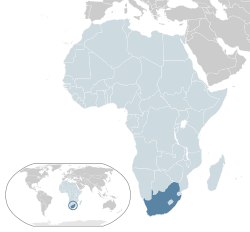

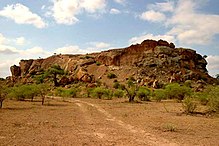


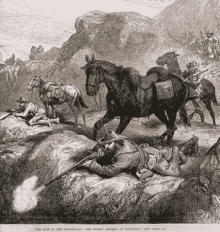

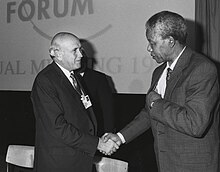


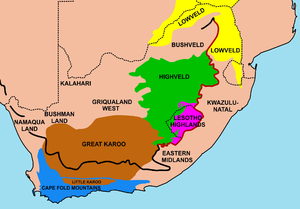








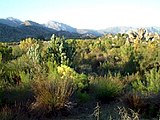


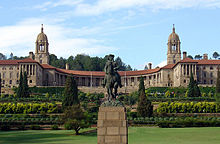




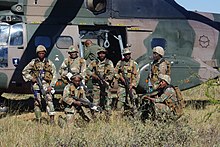

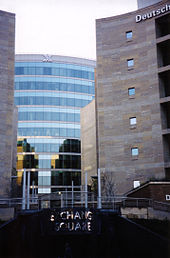







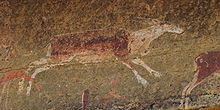
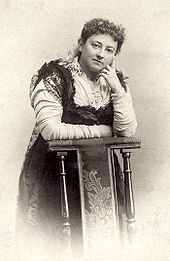

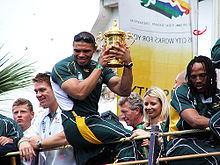

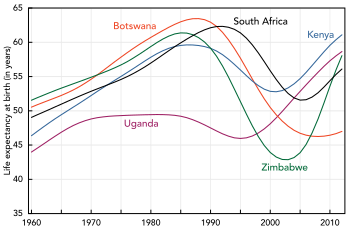
No comments:
Post a Comment